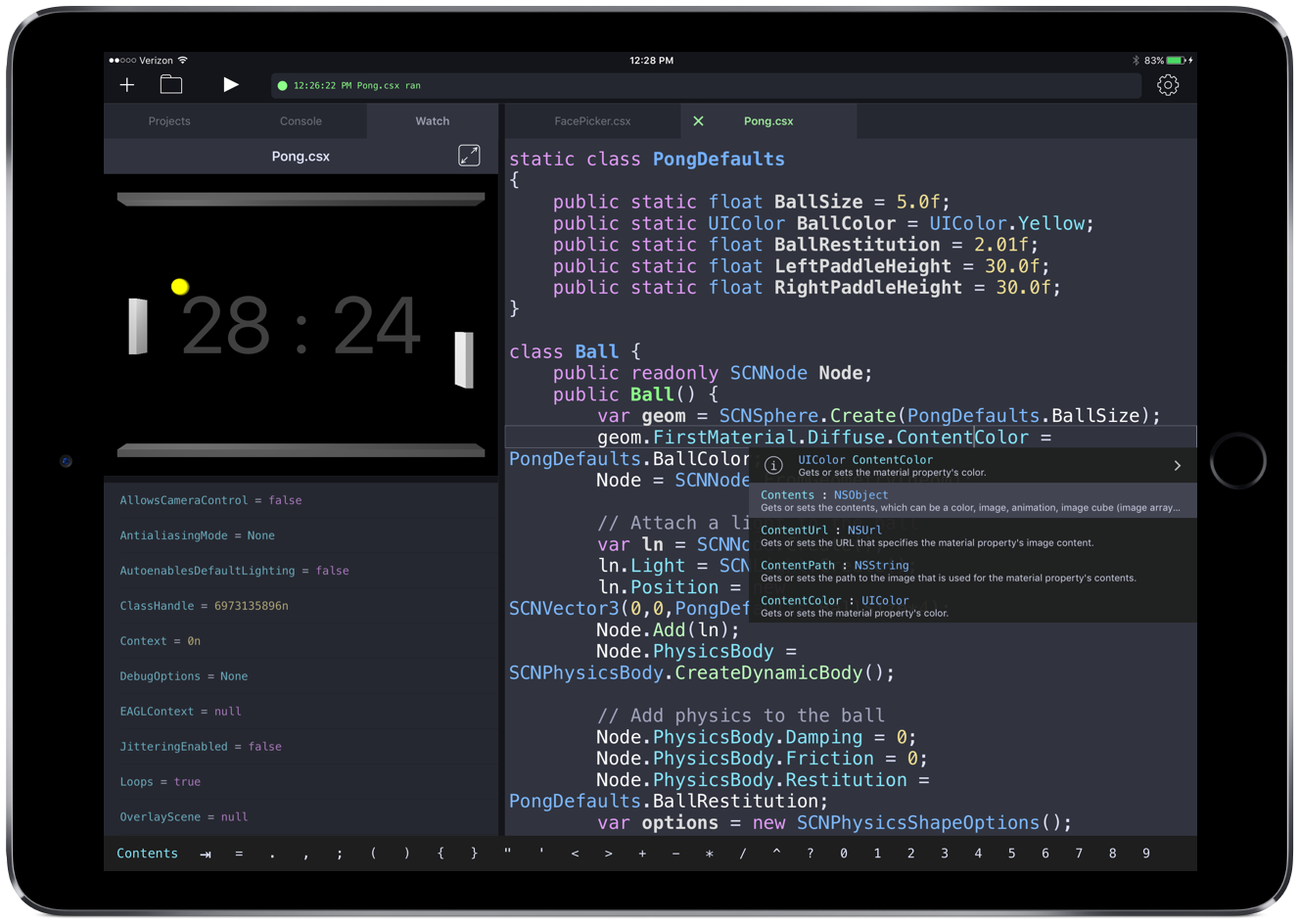
A new app called Continuous Mobile Development Environment has been released, and it’s a professional C# and F# IDE for iOS devices.
The app was built with Xamarin and developed by Frank Krueger, a longtime independent developer who made apps like iCircuit and Calca. The Continuous app offers full syntax highlighting and code completion, including documentation for more than 60,000 symbols. There is F# support with the open-source FSharp Compiler to allow Continuous to deliver support for .NET’s standard library, according to a Xamarin blog post.
Continuous is fast and works completely offline. It also integrates keys for C# and F# development, and it enables developers to carry on development with the Visual Studio and Xamarin IDEs.
Developers can learn more about the app at continuous.code.
NVIDIA debuts new VR technology
NVIDIA researchers are preparing to demo a new technique that matches the physiology of the human eye to heighten virtual reality experiences.
The demo is coming to the annual SIGGRAPH computer graphics conference, and it will display a new perceptually based foveated rendering technique that lets developers create better virtual environments. A human’s vision has two components: foveal and peripheral vision. Foveal vision provides detailed vision, while peripheral covers a wider field of view, and the differences in these components is what inspired foveated rendering systems, according to an NVIDIA blog post.
NVIDIA said that foveated rendering “taken too far” will lead to a flicker or blur, or what virtual reality developers call “tunnel vision.” The full project can be viewed here.
Inflectra releases SpiraTeam 5.0
Inflectra released SpiraTeam 5.0, the software development company’s application life-cycle management tool.
This version provides a platform to developers, testers, and project managers to collaborate. It also gives teams a brand new interface that allows them to work seamlessly across all devices. It allows developers to check bugs while they are on the go, and testers can run their complex tests on their tablets or mobile devices.
SpiraTeam 5 gives teams prebuilt workflows for requirements management, testing, resourcing and bug tracking, said the company. SpiraTeam 5 also includes built-in source-code management. The ALM solution includes a testing suite, which is available separately as SpiraTest, and its new interface allows for testing applications and systems.
Survey: Containers still difficult to deploy
According to a survey of IT professionals, 70% of respondents said that using containers today allows them to save money, manage infrastructure, and increase flexibility. But many challenges still remain, especially when it comes to deploying.
NetEnrich surveyed 200 IT professionals, focusing on the use of containers and related technologies. Companies are moving toward container adoption, but these organizations are still running into a few issues. The biggest issue has been integrating containers into an IT environment. According to the survey, security and managing containers are their biggest gripes, and a lack of experience and container tech among the staff is another difficulty when deploying containers.
About 66% of IT pros described how difficult it is to learn how to efficiently use container tech like Docker, Kubernetes and Mesos. While 21% said these technologies were highly challenging, 66% described it as moderately challenging.
Flash usage and other changes in Firefox
Beginning in August, Firefox will block certain Flash content that Mozilla does not find to be essential to their users’ experience. Firefox will continue to support legacy Flash content, but these new changes should bring Firefox uses enhanced security, more battery life, and a better browser experience.
Firefox “implemented Web APIs to replace functionality that was formerly provided only by plug-ins,” according to a Mozilla blog. Since websites have switched from Flash to other web technologies, the plug-in crash rate in Firefox has dropped, so Firefox plans on continuing this trend by blocking Flash content that is invisible to users, according to Mozilla’s blog.
There is a list of Flash content that can be replaced with HTML, and Mozilla plans to add to this list over the years. Also, later this year, Mozilla plans on extending this list to include the use of Flash to check content viewability. Doing so will improve device battery life and performance when using Firefox.
More information can be found here.





